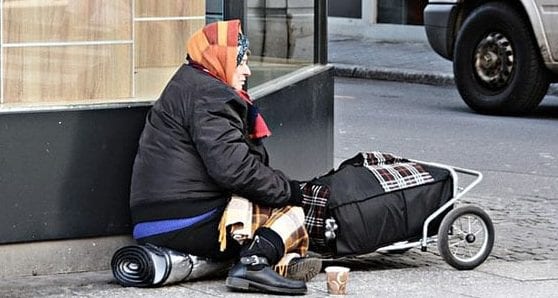 It used to be that individuals with serious mental illnesses were sent to live in institutions for extended periods and often their entire lives. Since there were few effective treatments, most patients would be sedated or physically restrained to control disordered behaviour.
It used to be that individuals with serious mental illnesses were sent to live in institutions for extended periods and often their entire lives. Since there were few effective treatments, most patients would be sedated or physically restrained to control disordered behaviour.
This environment was the norm for mental health patients who were completely separated from society and locked away in asylums.
There were large provincial psychiatric hospitals in most provinces with upwards of 2,000 beds each, often on large tracks of prime real estate on the outskirts of town and incorporating a farm, which provided occupational therapy for chronic patients and supplied some of the food used in the institution.
A shift began in the 1970s when governments and health care professionals advocated for the deinstitutionalization of the mentally ill as more effective treatments were becoming available. Initially, this was a shift in ideology with positive intentions such as integrating the mentally ill into communities and enriching their lives. It was recognized that keeping someone in an institution for years often created many problems in addition to the mental illness.
| RELATED CONTENT |
| Pilot program offers hope for the homeless By Roslyn Kunin |
| The work to end poverty and homelessness is just beginning By Jino Distasio |
| More Canadians than ever are suffering from food insecurity By Sylvain Charlebois |
Deinstitutionalization was designed to move psychiatric patients out of institutions and into the community. This action was to occur in conjunction with an expansion of community-based services for the treatment of these individuals. Sound familiar?
In theory, the money saved from closing institutions and hospital beds would be used directly to implement new, community-based treatment programs.
Unfortunately, the reality has not lived up to the goal. Although many patients were removed from institutional settings, there has been insufficient corresponding expansion of community services or treatment programs.
What has resulted from this lack of follow through and accountability from the government is that existing services are strained. Also, seriously ill patients with nowhere to go are living on the streets receiving no care or are incarcerated in the criminal justice system as a result of their disordered behaviour.
Continued government cutbacks and lack of funding have kept necessary mental health beds closed across the country and have also further restricted the ability of supportive housing organizations and others to operate.
Without adequate support and treatment, unemployment rates among those with severe psychiatric disorders are close to 90 per cent. Lack of income increases depression, anxiety, stress, psychosis, the likelihood of substance abuse and many other problems.
Eventually, the mentally ill lose access to adequate housing, employment, nutrition, family and social activities. Not only is this a huge personal cost to those directly affected, but this state of affairs costs the government money in the long run.
Without proper housing, income or nutrition, there are more health complications and relapses and individuals need more frequent access to emergency health services at the expense of the taxpayer.
Studies of the effects of deinstitutionalization show that the police have faced ever-increasing demands with incidents related to mental illness. Between 1975 and 1979, these incidents increased by more than 200 per cent. Another more recent study shows that in Ontario this number has increased by more than 100 per cent since 1998. There is no reason to believe these numbers would be significantly different in other provinces.
Approximately 20 per cent of the prison population has a mental illness and more than five per cent are seriously ill. Obviously, the criminal justice system is not properly equipped to provide treatment and what results is a revolving door problem among the mentally ill.
Mental illness is also over-represented among the homeless population. More than 30 per cent of the general homeless population suffers from a mental illness and up to 75 per cent of homeless women are mentally ill.
Further, people with mental illnesses tend to remain homeless for longer periods and have less contact with friends and family, more barriers to employment and worse health than other homeless people.
Not only has the government failed to rectify this situation, but it further exacerbates things by instituting measures such as the banning of pan handling, the continuous moving along of the homeless and cruel tactics such as taking away shopping carts from homeless individuals with nowhere else to store their few belongings.
All of this continues to push the seriously mentally ill to the outskirts of society and will only serve to force more desperate and criminal behaviours and more need for tax money to be spent on emergency health care, policing and imprisonment.
Dr. Latimer is president of Okanagan Clinical Trials and a Kelowna psychiatrist.
The views, opinions and positions expressed by columnists and contributors are the author’s alone. They do not inherently or expressly reflect the views, opinions and/or positions of our publication.


